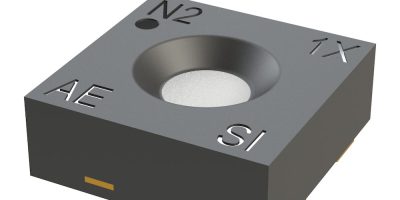Claiming to unify the fragmented IoT ecosystems with Matter protocol -enabled wireless microcontroller software, Texas Instruments has introduced Matter-enabled software development kits for Wi-Fi and Thread SimpleLink.
Engineers can use the new software and wireless microcontrollers, the CC3235SF and CC2652R7 for example, to create low-power and secure, battery-powered smart home and industrial automation IoT applications that seamlessly connect with devices across proprietary ecosystems.
Matter is the royalty-free connectivity protocol developed by the alliance, formerly the Zigbee Alliance. Matter runs on Thread and Wi-Fi network layers and uses Bluetooth Low Energy for commissioning, allowing devices from different ecosystems to communicate, even if they are manufactured by different brands. By providing a unified application layer based on proven technologies, manufacturers can leverage this open-source protocol to accelerate IoT development.
Matter-enabled SimpleLink wireless MCUs, for example, can enhance system efficiency and security, said TI. The MCUs can help designers reduce standby power consumption up to 70 per cent in Thread applications compared to competing devices, claimed TI, to extend battery life up to four years while using five-second polling. For long-range connectivity applications, the integrated power amplifier in these wireless MCUs enables reliable connectivity by consuming 101mA at +20dBm. This is claimed to be the industry’s lowest power consumption, further reducing battery power consumption at higher output power.
Designers of Matter-enabled Wi-Fi applications can leverage TI’s dual-band, multi-layer security approach to protect device data and secure against cyberthreats without the need for additional external components.
Engineers can streamline a design of Matter-enabled applications by connecting with applications engineers through the TI E2E Wireless Connectivity design support forums available online, advised TI.
They can start prototyping with LaunchPad development kits for Thread LP-CC2652R7 and Wi-Fi LP-CC3235SF.
The CC2652R7 and the CC3235SF are now available through TI and authorised distributors.
TI is a board member of the alliance and one of the participants in the development of Matter. In addition to helping engineers build wider and more interconnected IoT ecosystems, overcoming compatibility challenges caused by fragmented ecosystems, the company is also a contributor within the Thread Group and a key contributor to the Wi-Fi Alliance.
TI will demonstrate the Matter protocol’s ability to enable smarter EV charging management at home at electronica 2022 in Munich (15 to 18 November) in Hall C4-157.
http://www.TI.com.







